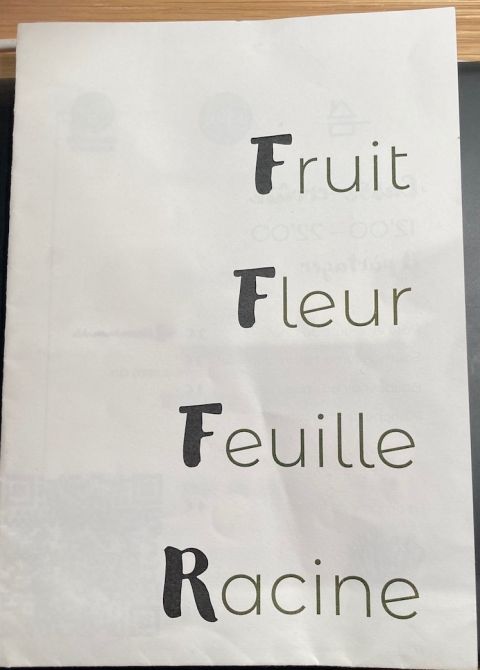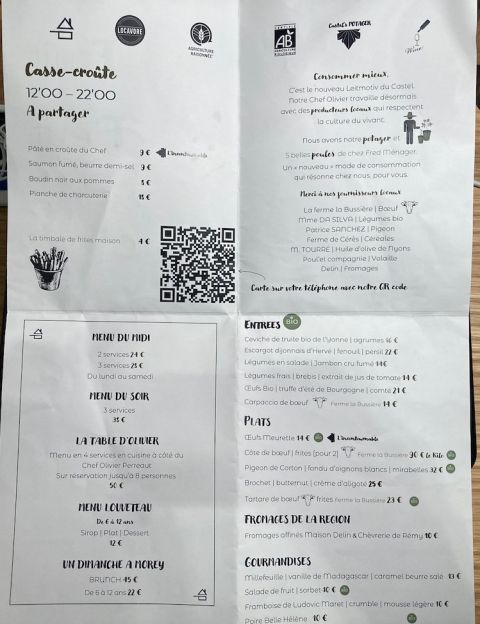Menus have been off the menu …

… but Nick still loves them. Menus above are pictured by Catherine Heath via Unsplash.
2020 has undoubtedly been a highly discouraging year for menu designers and everybody involved in their artwork and their production.
Restaurants have been closed for several months. Many owners who planned to open in 2020 have had to reschedule to open in 2021. Health and hygiene rules have meant the disappearance of the paper menu and its replacement in numerous restaurants by a combination of a QR code and an iPhone. The publication in October 2020 of the paperback version of my second book, On The Menu (Unbound £18.50), could not have been worse timed.
And yet I still find menus fascinating. Not just for the many pleasures that they convey but also for what they say about restaurateurs’ varied approaches to how they present their food. How many first courses will there be? How many main courses? Will the desserts be on the same menu or on a different piece of paper? (My preference is definitely for the latter – who wants to see the list of first and main courses all over again when you are thinking of something sweet and delicious?) Are there any specials of the day – dishes that I would almost certainly choose immediately?
And here I must digress for a moment to say how much I disagree with the comments of Chris Kempczinski, the CEO of McDonald’s, who, in his ‘Lunch with the FT’ interview with Andrew Edgecliffe-Johnson on 27 November, commented, ‘We have a very Darwinian menu. Whatever sells, we put on the menu: whatever doesn’t sell, we take off.’ Which restaurant does not operate on these principles?, I would like to ask Mr Kempczinski. There are simply no menus replete with dishes that have become so unpopular in any restaurants that manage to continue in business. This is a policy that would certainly lead to early bankruptcy.
My own experience of writing menus is rather the opposite. There is usually a battle between the need to change and to experiment, against the continued popularity of certain dishes and ingredients. If these dishes came off the menu, it would definitely upset the customer. But perhaps Mr Kempczinski, who claims to eat twice a day in a McDonald’s, Monday to Friday, just needs to get out more.
What defines an excellent menu design is not just its ability to combine a number of dishes, but also its flexibility. The menu has to be attractive to look at and sufficiently attractive in form that it induces the customer to pick it up. It has to be inexpensive to produce – especially in the current climate. It has to be easy on the eye, and another stipulation of mine that I explain in my book – that the menu has to incorporate some form of colour to excite the eyes of the customer – can now be passed over as too expensive to be worth considering – for the foreseeable future at least.
On top of all these functions, a menu must also satisfy two more criteria, one a long-term requirement, the second a far more recent phenomenon. The first is that a really well-designed menu will bring a smile to the face of the diner. Nothing funny but just something that will allow the customer to relax and to feel that he or she has made the right choice of restaurant. The second is that the menu must convey some notion of the producers involved – those whom the chef has chosen to work with – as this association, quite rightly, has become increasingly important for the customer.
So in what I hope will become the first incarnation of many, I would like to report the winner of the JR.com Inaugural Menu Design of the Year and to announce that this year’s top award goes to the restaurant of the Castel de Très Girard hotel in Morey-St-Denis.
This comfortable hotel in the heart of the Côte de Nuits redesigned its restaurant quite recently, as is obvious from the cool look of its interior with pale wood and a lot of glass. But when doing so the management did not overlook the importance of its menu.
This is presented as a four-page fold-out (A5 in size) that proclaims on its front cover the words ‘Fruit’, ‘Fleur’, ‘Feuille’ and ‘Racine’ (fruit, flower, leaf and root), the four sorts of days into which the biodynamic calendar is divided. The menu seems to announce quite prominently that this is a restaurant that very obviously nails its menu’s colours to the mast.
Once unfolded, to A3 size, this commitment to the customer’s well-being continues. Across the top there are half a dozen symbols that proclaim the kitchen’s commitment to those farmers who farm organically and locally, including the restaurant’s own vegetable patch. Below this is the number (five), but not the names, of the chickens that supply the kitchen, and underneath that are the names of the seven principal suppliers to its chef, Olivier Perreaut. These range from beef from the Bussière farm to olives from M Tourre in Nyons to cheeses from Fromagerie Delin.
All this information is fitted into the top-right quarter of the menu. Directly across from this are the four items that constitute their snack menu including their pâté en croute, which they describe as ‘unmissable’, as well as a picture of their chips. Next to this is their QR symbol.
Below this, in the bottom-left quarter of the menu, are the five menus available: the fixed-price lunchtime menu; the same for the evening; a special four-course menu for up to eight diners; the children’s menu; followed by the prices, for adults and for children, of their Sunday brunch menu.
The à la carte menu in the bottom-right quarter has space enough for half a dozen first courses, five main courses, a description of the cheese on offer, and four desserts. Of these, a first-course dish of organic eggs, summer truffles and Comté cheese was the most memorable, as I wrote recently in France – a nation of trencher-people.
But equally memorable to me was coming across such a well thought-out and cleverly constructed menu. It’s also a menu that, because of its small size, has sat comfortably on my desk since our return from Burgundy bringing with it very happy memories – another reason to collect, and to relish, these documents of pleasure.
Le Castel de Très Girard 7 rue de Très Girard, 21220 Morey-St-Denis, France; tel +33 (0)3 80 34 33 09
Become a member to view this article and thousands more!
- 15,399 featured articles
- 274,790 wine reviews
- Maps from The World Atlas of Wine, 8th edition (RRP £50)
- The Oxford Companion to Wine, 5th edition (RRP £50)
- Members’ forum
- 15,399 featured articles
- 274,790 wine reviews
- Maps from The World Atlas of Wine, 8th edition (RRP £50)
- The Oxford Companion to Wine, 5th edition (RRP £50)
- Members’ forum
- Commercial use of our Tasting Notes


